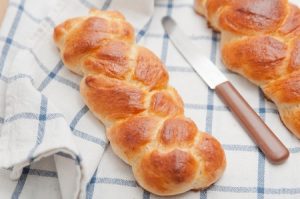I recently heard a story from a friend about her husband who lost his very cherished tallit in synagogue one Shabbat. He tried every way possible to find it. He was up on a Bima a few times making announcements to temple congregants about the missing tallit. He put a notice in the temple newsletter and even service programs asking if anyone had seen it. Very distraught about not having it and getting no results from his efforts to find it, he just gave up.
Apparently, the tallit was not that dissimilar looking from the tallitot you often find in the temple closet for Shabbat and other services.
One day his daughter (in her 20’s) came to services with her parents. There was a basket of tallitot and she decided to go through it. You see, when she was a child she would sit next to her dad in the sanctuary and touch his tallit all the time. Remembering how it felt, she reached in the basket and after touching several tallitot she retrieved her dad’s. After a year of looking, everyone was astonished, and her dad so relieved to finally have the tallit back in his possession.
But the mystery of how it went missing for so long was also revealed. Apparently a congregant who lives in Florida most of the year attended services. He was visiting the NY area and by accident took the tallit home with him back to Florida….thinking it was his.
When he returned the following year he returned it to the temple’s tallitot population.
I don’t know about you, but I was so moved by this story….that the tactile experience of young girl in temple could be so meaningful that it stayed with her into adulthood.

